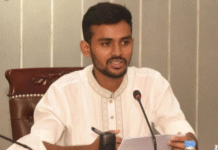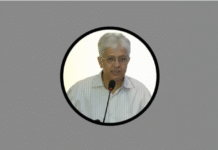Dhaka and the cities of the future

National Geographic (NatGeo), the international news magazine, dedicated its April 2019 issue to the challenges of urban living and the progression of big cities. When I came across the hard copy of this issue, entitled “Cities: Ideas for a Brighter Future”, my heart reached out for Dhaka, the city where I was born and the city of my love. I started going through the pages of the magazine reading up on ideas offered by some of the world’s best thinkers, architects, urban planners, and civic leaders on how to build or rebuild their own favourite cities for the future. As a lifelong DhakaphiIe, I assumed and believed that Dhaka, obviously, would be a prime candidate for NatGeo’s attention and will benefit immensely from the contribution that could be provided by the team assembled by the magazine. Unfortunately, none of the essays in the Cities Issue of NatGeo addressed Dhaka’s problems specifically. Nevertheless, what gave me reasons to rejoice was the affirmation that many of the world’s largest, most crowded, and also the so-called “unliveable” cities face and manage the same set of problems that Dhaka does.
I have written in these columns in the past on some of Dhaka’s pressing needs. Trash removal, ease of traffic congestion, pollution-free air, affordable housing, playgrounds. You name it. Yes, Dhaka has to solve these problems and many more. But reading the NatGeo articles gave me hope that none of them is insurmountable. If other developing countries and cash-strapped municipalities can do it, how can Dhaka be an exception?
Why did NatGeo zero in on the cities? Because, more than two-thirds of the world’s population will be living in cities in 2050 compared to about half of the population in 2010, according to the UN. It is forecasted that the world’s population will reach 8.6 billion in 2030 and 9.8 billion in 2050 from 7.0 billion in 2010. Dhaka’s 2019 population is now estimated at 20,283,552 and will reach 31.23 million in 2035. In 1950, the population of Dhaka was 335,760. Dhaka has grown by 2,686,375 since 2015, which represents a 3.62 percent annual change. And the trend will continue. Let us hope that the growth rate slows down slightly between 2020 and 2035. According to one source, the growth rate of the city is projected to slow down from 3.56 percent annually in 2025 to 2.15 percent in 2035.
But, what do we expect the future city to look like? NatGeo tasked the internationally renowned architectural and urban planning firm Skidmore, Owings and Merrill (SOM) to explore and come up with a guideline to answer the 64 billion question, “How to design a city of the future?” My jaws dropped when I read the guidelines provided by NatGeo’s editors.
The city of the future must meet 8 targets: i) It must have a plan to allow “ecology” to guide development; ii) The water resources are protected and systems are designed to capture, treat, and reuse it; iii) Energy is renewable and the city becomes more liveable even as it becomes more densely populated; iv) All waste becomes a resource; v) Food is grown locally and sustainably; vi) High-speed rail to improve mobility; vii) The culture and heritage of the increasingly diverse population are publicly supported and; viii) The infrastructure is carbon-neutral, and the economy is largely automated and online.
When I talk to someone who lives in Dhaka, or returned from a short visit there, we always return to our favourite topic, “Life in Dhaka”. We discuss the new shopping malls, coffee shops sprouting up in every corner of the city, the flyovers and mega-projects, and the enhanced quality of life thanks to modern technology. The conversation then inevitably turns to tales of hours stuck in traffic, cost of decent healthcare in Dhaka, and the state of public transportation projects in the city. But, what cheered me up even more was the news that things are getting better in some, albeit small, pockets of the city.
On Facebook, I am a member of a group that calls itself “Dhaka- 400 years. History in Photographs”. On this page, members post facsimiles from various sources, both public and private. On a lazy day, I spend hours going over the black and white, sometimes colour, images of the city and livelihood, stretching from 100 years ago to more recent decades. The frames from the ‘70s and ‘80s hark back to the days when Dhaka roads were less congested and the neighbourhoods in Old Dhaka, Motijheel, Dhanmondi, and Gulshan were pristine. But, I ask: Was Dhaka more liveable then as compared with the megacity it is today? I also wonder if this is a legitimate question since we are comparing apples and oranges. Dhaka of yesteryears was not the same metropolis we see today. Yes, we have more crowd and congestion today, but we also have better jobs, modern hospitals, and improved quality of life.
The most important conversation for all stakeholders ought to be: how do we see the Dhaka of the future? What are we willing to give up for the convenience of living in Dhaka? Urban life involves trade-offs, and we may gain big benefits only in return for suffering big disadvantages.
Turning to the NatGeo spotlight on cities, the takeaways are plenty.
First of, each city needs to manage three key areas: traffic gridlock, affordability, and the demand for civic amenities.
Secondly, the urban planners of Dhaka today face the same issues that their compatriots in Kazakhstan or Uganda confront. However, the solutions in each case is unique. Jared Diamond, Professor of Geography at UCLA, wrote, “It all comes down to compromises. As the world becomes increasingly urban, will all of us be forced to adopt more of Singapore’s solutions?” pointing to the model adopted by Singapore, a tiny urban city with six million people packed into about 722 square kms. “Singapore’s government monitors its citizens closely, to make sure that individuals don’t harm the community.” As an example, he cites the following: “Smart-technology sensors measure (or will measure) the traffic on every street, the movements of every car…They will track the water and electricity consumption of every household and will note the time whenever a household toilet is flushed.” Are Dhakaites willing to accept such intrusions?
Thirdly, Jan Gehl, an urban designer in Copenhagen, Denmark who is revered for his insights, discounts the notion that one size fits all. Nonetheless, all city planners share a common vision, he says. “Waking up every morning and knowing that the city is a little better than it was yesterday—that’s very nice when you have children,” Gehl said. “Think about that…Your children have a better place to live, and your grandchildren have a better place to grow up than you could when you were young. I think that’s what it should be like.”
Dr Abdullah Shibli is an economist and works in information technology. He is Senior Research Fellow, International Sustainable Development Institute (ISDI), a think tank in Boston, USA.









